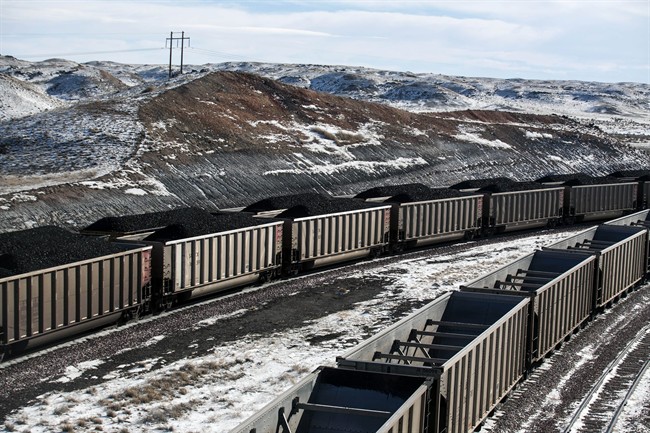The coal industry is in trouble – and has been for years.

Global use of coal fell by as much as 180 million tonnes or about five per cent in the first three-quarters of 2015 versus the same period in 2014 – the largest decline in history.
Since 2007, consumption of coal in Canada has gone down.
Even Alberta – Canada’s biggest coal polluter – plans to phase out coal-fired power generation by 2030.
The Nova Scotia government, however, appears to be going in a different direction.
This summer, the Donkin Mine in Cape Breton – a vast coal reserve – will be the first mine to open in the province since the last once closed in 2001.
READ MORE: Official linked to U.S. mine disaster resigns from Cape Breton’s Donkin mine project
Kameron Collieries is a subsidiary of the U.S. based Cline Group, LLC. It completed a deal in 2014 to buy the Donkin mine.
“We are craving for jobs in Cape Breton,” said Gordie Peckham, a Nova Scotia coal miner.

Get breaking National news
“This is something big, this Donkin mine”
While the mine provides much needed employment to the area – 120 jobs — there are questions about where the Donkin Coal block fits as coal seemingly goes out of favour globally.
In December 2015, the Paris climate agreement became the first-ever legally binding global climate deal.
The historic deal was signed by 195 countries including the United States and China, in an effort to cut greenhouse gas emissions and reduce the impact of climate change by shifting away from fossil fuels.
Even before the climate agreement, there were indicators internationally coal was on the decline.
At least a dozen U.S. coal companies went bankrupt between 2003 and 2014, according to a Bloomberg report. Last January, Arch Coal – one of the biggest coal companies in the U.S. – also filed for bankruptcy.
Big banks like JPMorgan Chase, Bank of America, and Morgan Stanley have also announced they will be moving away from investing in coal projects, citing climate change as part of the reason.
The JPMorgan Chase policy statement, for example, includes no lending to coal mining companies or financing for new coal-fired power plants in high-income countries.
“[Coal] is also an industry now that’s contracting … Their markets are declining,” said Davitt McAteer, former assistant secretary for the U.S. Mine Safety and Health Administration (MSHA)
“…Coal is in a difficult spot financially.”
Perhaps the biggest bellwether is happening overseas. China – the world’s biggest producer and consumer of coal – will be closing about 4,300 coal mines over the next three years, according to Chinese state news agency Xinhua.
According to Xinhua, decrease in demand due to an economic slowdown has led to overcapacity.
But environmental concerns are also a growing concern. Beijing will also end coal use by 2020 to reduce smog and improve air quality.






Comments